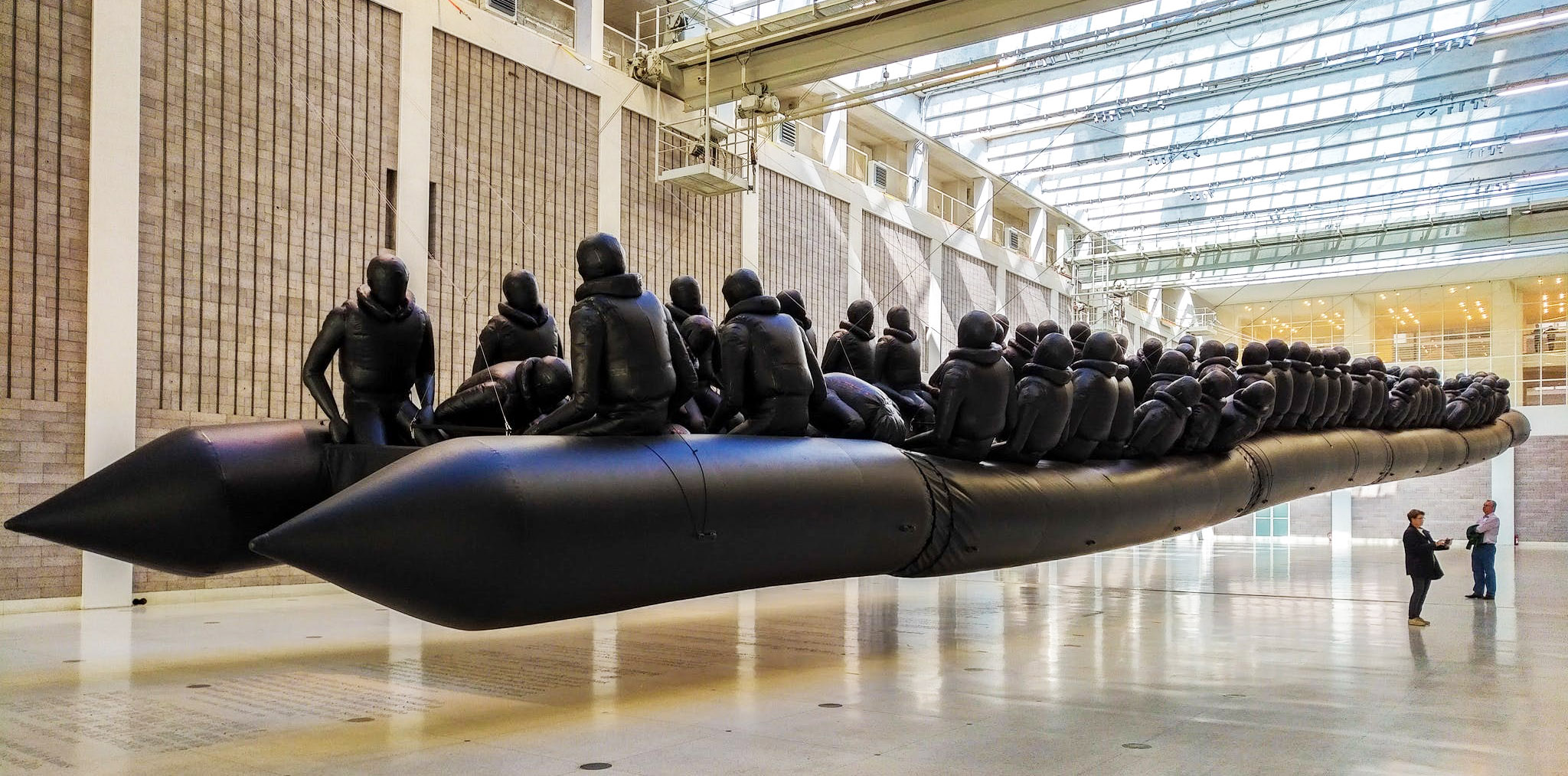”An artist must be an activist”
”If anything, art is… about morals, about our belief in humanity. Without that, there simply is no art.”
Ai Weiwei
”I don’t want art that points to a thing. I want art that is the thing.”
Tania Bruguera
Recently, we witness the world-famous works of Banksy, Ai Weiwei, Tania Bruguera, Nancy Goldin, Hito Steyerl, Zanele Muholi, and many more activist artists. The topics highlighted by activist artists are supported by many art institutions and art collectors to spread these works, to raise the awareness of the audience and the consciousness. The share of collectors is quite important that activist art can become more widespread and artists can continue their production.
The support given by the collectors to the activist art, in which the action and the idea meant more than visual, reveals the importance of activist art is not only for art’s sake but also for creating social awareness. Art institutions that reach more viewers together with collectors also play an active role in raising collective awareness. The article ‘Activist Face of Art,’ considers the relationship of collectors and art institutions that support activist art.
On Activist Art
Activist art, while activating the audience emotionally, it creates awareness on a subject that s/he had not previously been aware of. Or, the audience shares a similar apprehension with the artist whom s/he meets on a common ground in a subject that s/he is already conscious of. Activist art has a double-sided, mutual dynamic structure. In a sense, it also shows the audience the invisible truths in life. It aims to create an impact and offers an alternative eye, an alternative world to the audience. Activist art collectors create a common awareness with the artist in this context.

Activist Art Collectors
The investments made by world-renowned art collectors in the past years, especially in works dealing with global warming, climate change, and racism, underline the importance of activist artists and their art. Although each collector differs from each other by focusing on different issues, they play an important role to sustain their art by supporting the artists financially as well as their ideas and actions. For example, Francesca Thyssen-Bornemisza, whom we have talked about in the list of the best collectors of 2019, brings artists, researchers, and thinkers together. In this way, she is investing in a project of a mobile platform that is set out to explore the oceans, and to raise new research techniques, new methods of discovery and artistic practice by issuing the ecological problems that are raised during these trips.
Moreover, in an interview with a contemporary art collector and businessman, Nachson Mimran, who considers himself as an activist says “If you are collecting contemporary art, then you should go for the works that appeal to important issues because otherwise, you would not go beyond decorating your house.” Mimran is particularly interested in the artworks on migration. Considering that combating humanitarian crises requires a warrior mentality, Mimran says that everyone should devote himself to change.
Former NBA player Ellio Perry has a collection of African-American artists. As an art collector, he considers his collections as “not safe”. The collection takes part in temporary exhibitions in many museums in America. In one of the most important works in Perry’s collection, named ‘Power Absolute by Hank Willis Thomas’, the artist depicts black boats filled with black slaves on an Absolute bottle to evoke the history of capitalism and iconographies used in advertising.

Art Institutions and Museums
The Victoria and Albert Museum draws attention with the activist works and activist objects that it adds to its collections. Corilla Gardner, the museum’s design and digital curator, says activist art reveals the truth about what we live today. In museum collection, the work entitled ‘Refugee Flag’ of Yara Said was one of the most talked-about works in 2016. The artist, who is a refugee herself living in Amsterdam, designed an orange-colored flag with a black stripe for the Olympic team racers consisting of refugees. The flag represents the refugees who have to leave their countries by reminding the life jackets that the refugees wear. With this incident that took place in 2016, besides the Victoria & Albert Museum, the New York Museum of Modern Art and the Amsterdam Stedelijk Museums showed their sensitivity to the global refugee problem by adding the ‘Refugee Flag’ to their collections as well.
Cartier Contemporary Art Foundation director Hervé Chandes, who is considered as an important figure with his support for activist artists, argues that a museum’s collection should always be alive. He says that they have created agendas through art thanks to the works they added to their collections as a foundation. The current exhibition of the foundation includes photographs by Brazilian artist Claudia Andajur. She has taken photographs of Yanomami, who are one of the largest indigenous groups in Brazil. Andajur has devoted her life for more than fifty years to take the photos of this group. Based on this indigenous group, which has witnessed epidemics, fires, and extinction throughout their lives, global issues are highlighted.

With activist art, significant issues of our time are documented, come to light and awareness is created through artists. While the ideas, opinions, and subjects they aim to underline are brought to the agenda, apart from the visual pleasure of the arts, collectors and art institutions take steps to provide a collective consciousness by supporting the production of the artists.
Sena Arcak Bağcılar
Cover Photo: Ai Weiwei, Law of the Journey. Photo: Gilbert Sopakuwa

